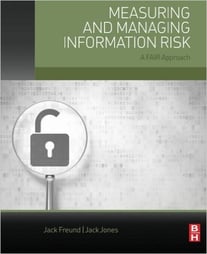Cyber-security isn't just about detecting and preventing threats; it's also about understanding risk, according to RSA Chief Technology Officer Zulfikar Ramzan.
Originally published May 7, 2018 by Sean Michael Kerner on eWeek
In a video interview with eWEEK, Ramzan provides insight into the evolving landscape for understanding cyber-risk and where RSA is enhancing its technologies to help organizations with cyber-risk quantification. Thinking about cyber-security in risk terms means moving beyond just talking about threats and having a strategy and process for accessing risks and their potential impact on a business.
"People are starting to think about security in risk terms," Ramzan said.
The National Institute of Science and Technology (NIST) Cyber-Security Framework (CSF), which was updated on April 16, now provides new guidance that has a strong focus on risk, Ramzan said. The NIST CSF update has a whole section on risk assessment, with a shift to more risk language than threat language, he added.
From a product perspective, Ramzan said the RSA Archer Governance Risk and Compliance (GRC) product now includes a cyber-risk quantification module. The module makes use of a methodology known as Factor Analysis of Information Risk (FAIR). With the FAIR methodology, quantitative methods are used to define and measure risk.
"Risk is not an easy thing to measure, but I think we can have a consistent and rigorous way of measuring risk which will take us leaps and bounds above where we are today," he said.
Several core elements make up cyber-risk, according to Ramzan. The first is understanding what the threats are to a given environment. The second is understanding what assets the threats can impact. Finally, risk includes an understanding of what impact a given threat that infiltrates a particular asset will have on a business.
"Risk is the amalgamation of those things. It's not just the likelihood of something happening, but also understanding the impact," he said.
While RSA has Archer for GRC, NetWitness for security analytics and multiple other products for security controls, organizations are also increasingly turning to cyber-insurance as a way to help insure against cyber-risks.
"Cyber-insurance is a great way to create a compensating control to a certain degree around the impact of cyber-incidents," Ramzan said.
Ramzan added that cyber-insurance provides a way to augment an organization's cyber-risk capabilities and fill in gaps. That said, he emphasized that the reality of modern cyber-security is that organizations need to have a complete set of capabilities to cover off all the bases of cyber-risk.
"Our goal at RSA has always been to make sure we can fit whatever unique environment a customer has," Ramzan said.
Watch the full video interview with Ramzan here: "RSA Taking a FAIR Approach to Defining Cyber-Risk, Interview with Zulfikar Ramzan, CTO, RSA."
Sean Michael Kerner is a senior editor at eWEEK and InternetNews.com. Follow him on Twitter @TechJournalist.


